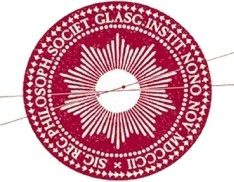Overview Camphill refers to the estate and Camphill House in the south side of Glasgow which were bought by Glasgow City Council in the late nineteenth century. (For more information about this area, see ‘Camphill Park‘ on The Glasgow Story website). The Read More …
Category: C
Caledonia Burns Club (not same as Caledonian Burns Club)
Overview The ‘Club Notes’ in the Annual Burns Chronicle and Club Directory for 1901 includes this club’s Constitution, which gives its objects: ‘The objects of the Club shall be to foster an intimate acquaintance with the works of Burns, and Read More …
Caledonian Burns Club (aka Glasgow Caledonian Burns Club) (not same as Caledonia Burns Club, Glasgow)
Overview There is little currently known about this club. According to the Annual Burns Chronicle and Club Directory, in 1898, the group met every other Thursday. From 1899 until 1912 (at least), this was changed to every other Tuesday from Read More …
Calton Wesleyan-Methodist Congregational Young Men’s Society
Overview Calton is a district just to the east of Glasgow’s city centre. (For more information about this area, see Gordon Adams’s article, ‘Calton’ on the East Glasgow History website.) Members of this young men’s society were most likely part of the Read More …
The Church of Scotland Students’ Literary Association
Overview This association initially met on Saturday mornings from 9.30-10.30 (later changed to 12.30-1.30pm, and then to 10-11am) in the Hall of Blythswood Church, located at 258 Bath Street (near Charing Cross). The yearly session ran from November or December Read More …
City of Glasgow Literary Society
Overview The object of this society was its members’ intellectual improvement through the reading and discussion of essays written by society members, but this was to exclude the subject of religious doctrine. A couple of examples of the essays Read More …
Clarinda Burns Club (currently unclear if this is Glasgow Clarinda Club)
Overview This club was named after ‘Clarinda’, the name adopted by Agnes McLehose (or MacLehose, M’Lehose, Meklehose), whose affair with Robert Burns (‘Sylvander’) is the subject of ‘Ae fond kiss’ (1791). The Annual Burns Chronicle and Club Directory for the Read More …
Clifton Literary Society (currently unknown if this is the later Clifton Road Literary Society)
Overview Clifton is an area just to the west of Charing Cross. Not a great deal is currently known about this society, which was composed of both men and women. However, their (members’?) location near the West End, along with Read More …
Clydebank Burns Club
Overview Clydebank is located to the west of Glasgow and is situated on the north of the River Clyde. The Visit Scotland website offers a brief history of the area: ‘Clydebank is the historic heartland of the Scottish shipbuilding industry Read More …
College United Free Church Literary Society
Overview There is little currently known about this society. The only information we have to date comes from a 1903 printed brochure for the Wellington United Free Church, Glasgow (see ‘Additional Notes’ below), which lists a a joint debate with Read More …
Co-operative Burns Club
Overview This Burns club met on the first Saturday of each month between October and May at 8pm. Its meetings were held at various local restaurants (e.g. in Room No. 10 at M’Culloch’s Restaurant, Croy place, 9 Maxwell Street, at Read More …
